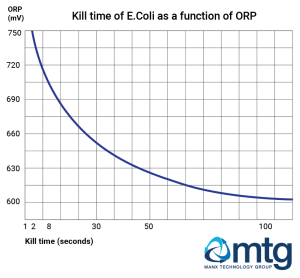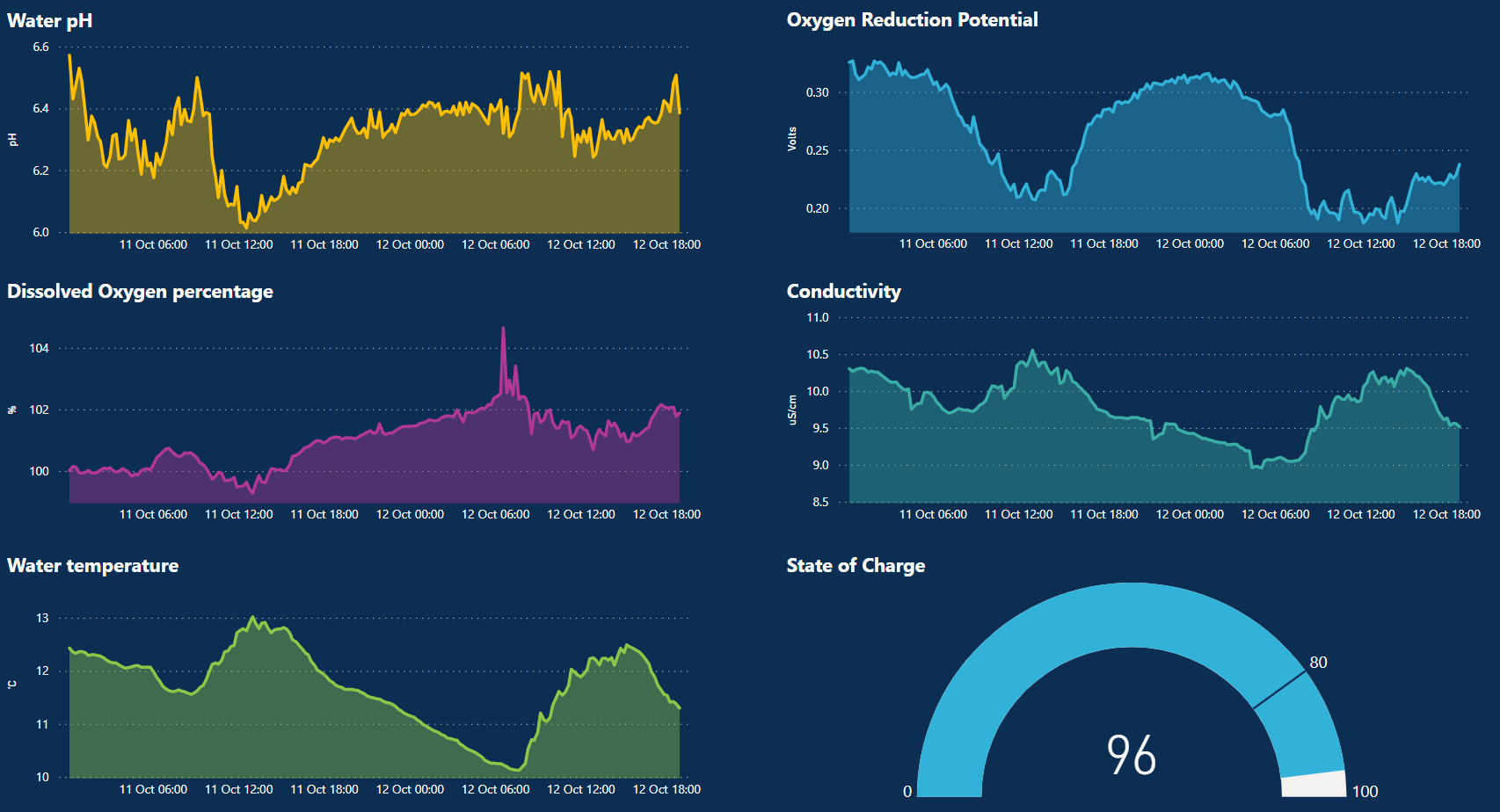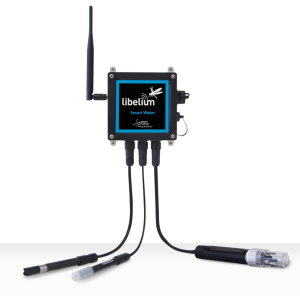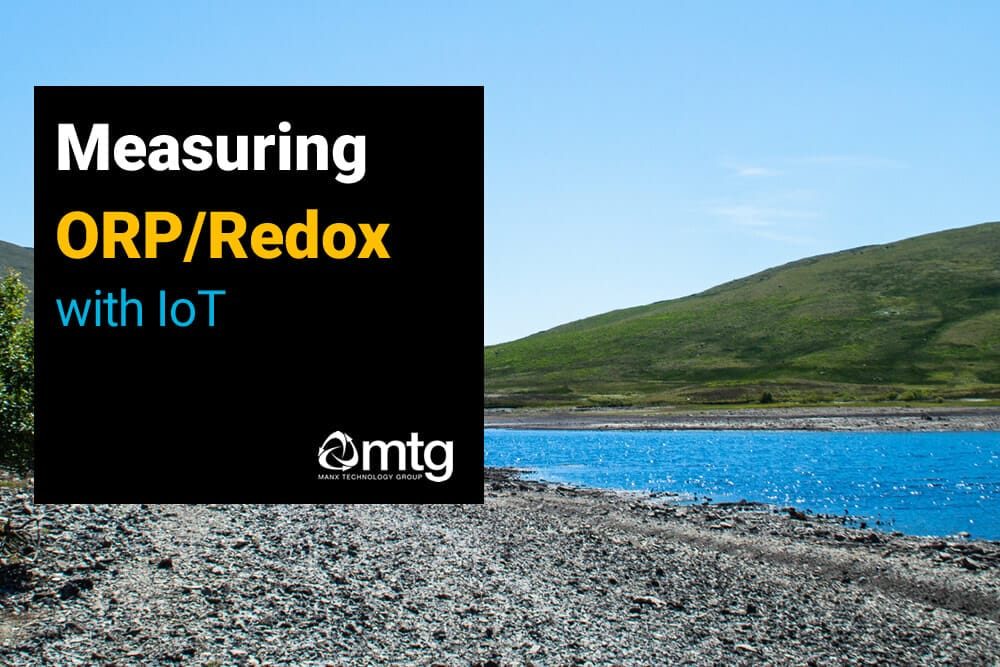IoT sensors can be used to measure ORP (Oxidation Reduction Potential) in swimming pools, rivers, lakes and drinking water supplies. In this article, we provide an outline of ORP and its relevance in regards to Smart Water applications. When IoT sensors measure ORP, pH and temperature, the data can be transmitted wirelessly to a database server or cloud platform such as Microsoft Azure. Data can then be visualised in dashboards, mobile apps or using applications such as Microsoft Power BI or Tableau.
What is ORP?

ORP stands for Oxidation Reduction Potential. A simple explanation of ORP is a measurement of how clean the water is and its ability to breakdown contaminants. A more scientific definition is a measurement of sanitizer effectiveness and is the ability of a chemical substance to oxidise or reduce another chemical substance. ORP is also known as Redox Potential.
IoT sensors submerged in water measure ORP and return a value in millivolts (mV). When the water needs to be disinfected (i.e. pools, drinking water) then a disinfectant or sanitiser will be used and ORP measured.
In those environments where disinfection is required, chemicals such as chlorine are added to deactivate micro-organisms and oxidise other organic materials. Measuring ORP helps judge their effectiveness. The higher the ORP reading – the water is more capable of disinfecting and oxidising organic matter.
- The presence of oxidisers such as chlorine, ozone and hydrogen peroxide increase the millivolt (mv) value).
- The presence of reductants causes a lower millivolt value, decreasing the rate of disinfection.
- Organic matter, urine, sweat, micro-organisms and faecal matter can all reduce the ORP value.
ORP is an indicator of micro-organism inactivation – in effect, a higher value – reduces contamination.
- Drinking water can be disinfected with an ORP of 650mV.
- Swimming pools with an ORP of 700-720mV allow for quick disinfection.
There is a direct correlation between ORP values (mV) and the kill time of E.Coli, Salmonella and Listeria.
What is a ‘good’ ORP level?
Higher ORP levels mean the water is more capable of destroying foreign objects. ORP levels for typical applications are shown below:
| ORP Level (mV) | Application |
| 0-150 | No practical use |
| 150-250 | Aquaculture |
| 250-350 | Cooling Towers |
| 400-475 | Swimming pools |
| 450-600 | Hot Tubs |
| 600 | Water Disinfection * |
| 800+ | Water Sterilisation |
Coliforms, bacteria and ORP
Depending on the application, ORP can be viewed as the likely level of bacteria in the water, because there is a direct link between ORP and Coliform count. The following table shows ORP levels and a relative Coliform count.
| ORP Level | Coliform count in 100 ml of water |
| 200 | 300 |
| 300 | 36 |
| 400 | 3 |
| 600+ | 0 |
Visualising ORP
The following diagram shows a real-time dashboard of water quality for the ‘River Glass’ in the Isle of Man, British Isles. This particular deployment is measuring pH, ORP, Dissolved Oxygen, Conductivity and Water temperature. The system is battery/solar-powered and is transmitting its data back using 4G.

How do I measure ORP

Libelium Plug & Sense ‘Smart Water’ systems have ORP sensors. The ORP sensor is placed in the water to be measured, where it takes the reading and transmits the data back in real-time using a mobile network (i.e. 4G) or a low-power WAN (LPWan) such as LoRa or Sigfox.
Sensor Specification
Sensor Type: Combination Electrode
Electric Potential: 245-270mV
Measurement range: 0 – 1999 mV
Stability: ±8 mV/24 h
Cable length: ~500cm
Learn more
Manx Technology Group provides a wide range of Smart Water solutions that includes measuring ORP, pH, temperature, turbidity, chemicals, metals and bio-matter. We can monitor 100s of different items – you can view an extensive list here. Using IoT equipment from Libelium – our solutions are field-tested, proven and enable a rapid-time-to-market.
To discover how your organisation can cost-effectively monitor ORP and have the data transmitted in real-time – speak to our solutions team by calling +44 1624 777837, e-mailing sales@mtg.im or submitting the contact form on our website.
Oxidation-Reduction Potential (ORP) for water disinfection monitoring, control and documentation (PDF)
https://www.water-research.net/pdf/orpdisinfection.pdf




